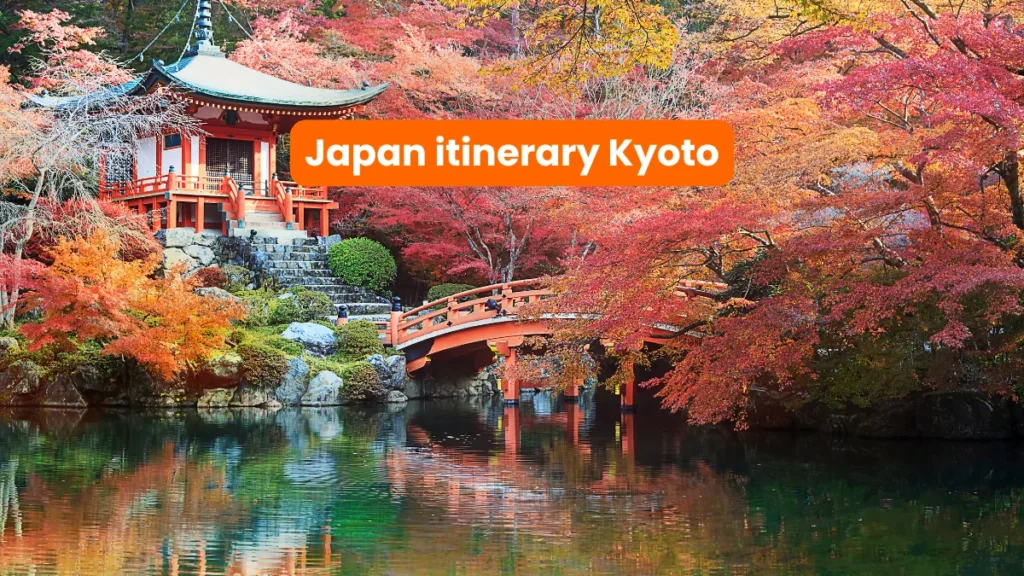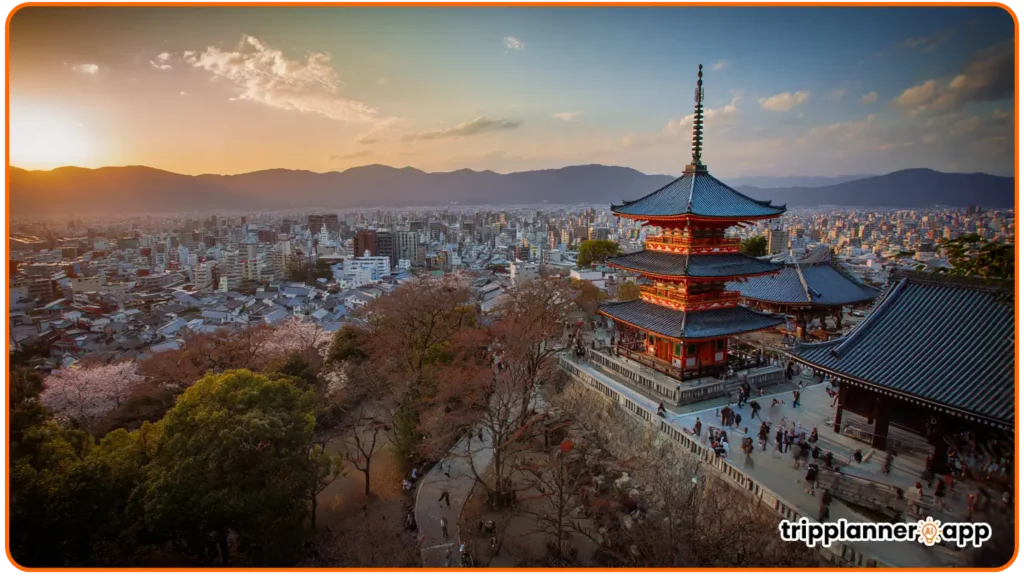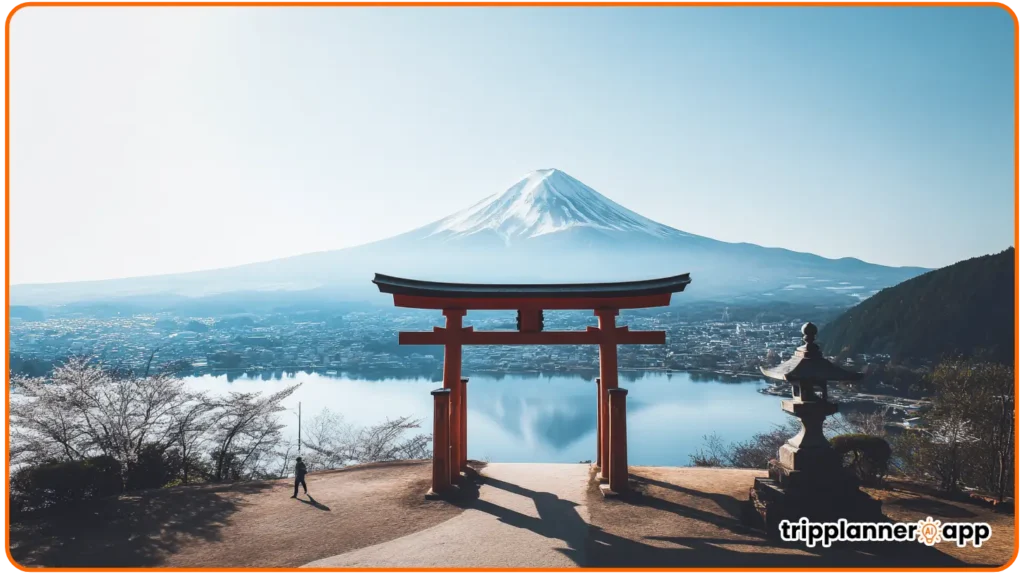If Tokyo is the heartbeat of modern Japan, then Kyoto is its timeless soul. With centuries-old temples, peaceful Zen gardens, and quiet alleyways where geisha still walk by candlelight, Kyoto offers travelers a chance to experience the Japan of tradition and grace.
This Japan itinerary for Kyoto is your guide to discovering the city’s must-see landmarks and hidden cultural gems. Whether you have 2, 3, or even 4 days, Kyoto delivers immersive experiences—from walking beneath thousands of vermillion torii gates to sipping matcha in a wooden teahouse.
Let’s explore how to make the most of your time in Kyoto—no matter how short or long your stay.
Why Visit Kyoto on Your Japan Itinerary?
Kyoto is often called Japan’s cultural capital—and for good reason. As the country’s imperial capital for over 1,000 years, Kyoto has preserved the essence of traditional Japan like no other place.
Here’s why Kyoto deserves a prime spot on your Japan itinerary:
- Historic Depth: With more than 1,600 Buddhist temples and 400 Shinto shrines, Kyoto offers a spiritual and architectural richness unmatched by any other city in Japan.
- Cultural Authenticity: From geisha performances in Gion to traditional tea ceremonies, Kyoto invites you to step into living traditions.
- Seasonal Beauty: Whether you’re chasing cherry blossoms in spring or fiery maple leaves in autumn, Kyoto’s natural beauty perfectly complements its historic sites.
- Accessibility: Located just 2.5 hours from Tokyo by shinkansen, and under 1 hour from Osaka and Nara, Kyoto fits easily into any travel route through Japan.
- Atmosphere: Unlike the neon glow of Tokyo or the food frenzy of Osaka, Kyoto has a serene, timeless charm that stays with you long after your trip ends.
Kyoto isn’t just a destination—it’s an experience. Whether you have two days or four, it’s a place that quietly transforms you.
Suggested Japan Itinerary: Kyoto
Depending on how many days you plan to stay, your Kyoto experience can range from a whirlwind highlights tour to a deeper cultural immersion. Below are three flexible itinerary options—whether you have 2, 3, or 4 days to spend in the city.
Each plan is designed to help you experience Kyoto’s essence at the right pace, with a blend of historic temples, scenic walks, and local charm.
Let’s explore the best Kyoto itinerary for your trip length:
Option A: 2-Day Kyoto Itinerary (For Fast Travelers)
This short but well-paced itinerary is ideal for those with limited time or who are combining Kyoto with other destinations like Tokyo or Osaka. In just two days, you’ll visit the city’s most famous shrines, temples, and historic districts.
Day 1: Southern Higashiyama and Gion
- Start your morning at Fushimi Inari Taisha, famous for its thousands of red torii gates.
- Continue to Kiyomizu-dera Temple, one of Kyoto’s most iconic viewpoints.
- Wander through the preserved streets of Sannenzaka and Ninenzaka.
- Take a break in a traditional tea house before heading into Gion for an evening walk.
- If you’re lucky, you might spot a geisha on her way to an appointment.
Day 2: Arashiyama and the Golden Pavilion
- Begin in Arashiyama’s bamboo forest and walk along the river by Togetsukyo Bridge.
Visit Tenryu-ji Temple and explore its serene Zen gardens. - Optionally, hike to Iwatayama Monkey Park for a city view.
- In the afternoon, head north to Kinkaku-ji (Golden Pavilion), a stunning temple covered in gold leaf.
- End your day with dinner back in central Kyoto or near your hotel.
Option B: 3-Day Kyoto Itinerary (Balanced & Cultural)
If you have three full days in Kyoto, you can slow down and dive deeper into the city’s cultural rhythms. This itinerary allows time for traditional experiences like tea ceremonies or wearing a kimono, while still covering Kyoto’s most iconic landmarks.
Day 1: East Kyoto and Historic Highlights
- Start your trip at Fushimi Inari Taisha with an early morning visit to avoid the crowds.
- Move on to Kiyomizu-dera Temple for sweeping views of the city.
- Walk through Sannenzaka and Ninenzaka streets, stopping for traditional sweets or souvenirs.
- Visit Yasaka Shrine and enjoy a peaceful stroll through Maruyama Park.
- In the evening, explore the atmospheric alleys of Gion and consider booking a cultural dinner experience.
Day 2: Arashiyama and Traditional Kyoto
- Spend your morning in Arashiyama: walk through the bamboo grove, visit Tenryu-ji Temple, and enjoy riverside views.
- Consider renting a kimono for the day or visiting a local onsen if the weather is cool.
- In the afternoon, head to Kinkaku-ji (Golden Pavilion), then stop at Ryoan-ji to see one of Japan’s most famous Zen rock gardens.
- Return to the city for dinner in downtown Kawaramachi or near Kyoto Station.
Day 3: Local Experiences and Optional Day Trip
- Start with a traditional activity like a tea ceremony, calligraphy class, or cooking workshop.
- Visit Nishiki Market for lunch and souvenir shopping.
- Optionally, take a half-day trip to Uji (famous for matcha and Byodo-in Temple) or to Kurama for a peaceful mountain escape.
- Enjoy your final evening with a casual meal and reflect on the cultural richness of Kyoto.
Option C: 4-Day Kyoto Itinerary (Deep Cultural Immersion)
With four full days, you can move at a relaxed pace, explore beyond the major sights, and experience Kyoto like a local. This itinerary is perfect for those who want to combine well-known landmarks with more personal, meaningful encounters.
Day 1: Southern and Eastern Kyoto
- Begin at Fushimi Inari Taisha and continue on to Tofuku-ji Temple, known for its gardens.
- Visit Kiyomizu-dera and stroll the preserved lanes of Sannenzaka and Ninenzaka.
- End the day in Gion or attend a cultural performance at Gion Corner.
Day 2: Arashiyama and Zen Exploration
- Explore the Arashiyama Bamboo Grove early in the morning, then visit Tenryu-ji Temple.
- Walk along the Hozugawa River or cross the iconic Togetsukyo Bridge.
- In the afternoon, visit Kinkaku-ji and Ryoan-ji for serene moments in classic Zen gardens.
- Optionally, try a tea ceremony or soak in a public onsen.
Day 3: Northern Kyoto and Hands-On Experiences
- Visit Ginkaku-ji (Silver Pavilion) and walk along the Philosopher’s Path.
- Stop by Eikan-do Temple or Nanzen-ji nearby.
- In the afternoon, book a cultural activity like kimono dressing, calligraphy, or wagashi (Japanese sweets) making.
- Explore Kyoto’s downtown area in the evening, including Nishiki Market and Teramachi Street.
Day 4: Off-the-Beaten-Path + Optional Day Trip
- Head to Ohara for quiet temples and countryside views, or take a short trip to Uji for matcha tasting and Byodo-in Temple.
- Alternatively, visit Kurama and Kibune for a mountain walk and riverside lunch.
- Use the afternoon to unwind or revisit a favorite district before departure.
Estimated Budget for a Kyoto Trip
Kyoto offers a wide range of travel styles—from backpacker hostels to luxury ryokans. Here’s a practical cost estimate per person depending on your travel preferences and trip length.
4-Day Kyoto Trip (Per Person)
| Category | Budget Traveler | Mid-Range Traveler |
| Accommodation (3 nights) | $120 – $210 | $300 – $540 |
| Food & Drinks | $55 – $90 | $100 – $150 |
| Transport | $20 – $30 | $30 – $50 |
| Entrance Fees | $20 – $40 | $40 – $70 |
| Activities/Tours | $25 – $50 | $60 – $120 |
| Total Estimate | $240 – $420 | $530 – $930 |
Note: Prices in USD. Estimates vary by season, location, and advance booking. Accommodation rates assume double occupancy divided per person.
Conclusion
Whether you have just two days or a full four-day journey, Kyoto delivers a unique blend of tradition, beauty, and culture that few cities can match. From walking beneath thousands of red torii gates to sipping matcha in a centuries-old teahouse, Kyoto brings the spirit of Japan to life.
This Japan itinerary for Kyoto gives you a flexible and thoughtful way to explore the city at your own pace. With careful planning, even a short stay can leave a lasting impression—and inspire your next return to Japan’s cultural heart.



